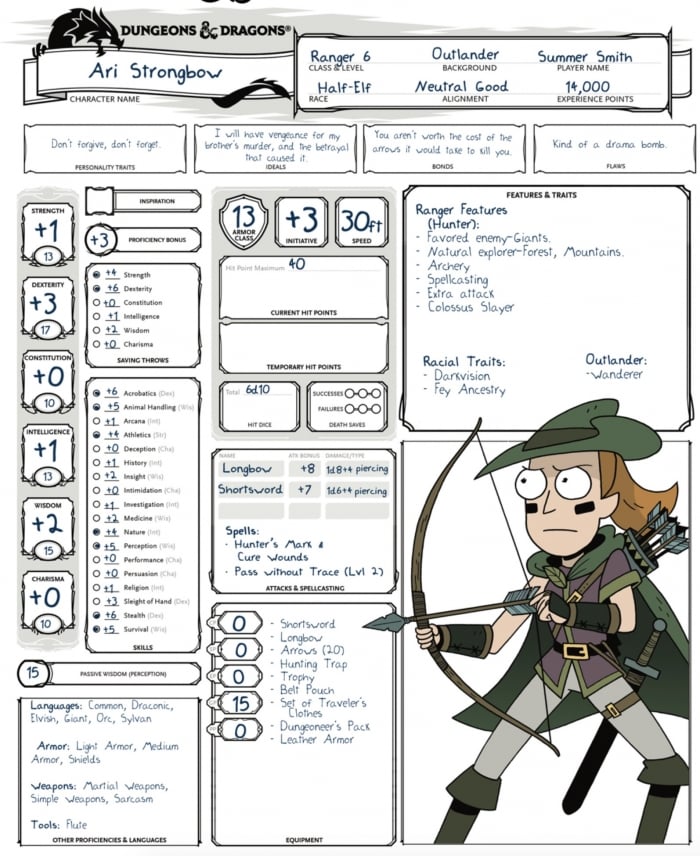

The skill bonus is the same as the ability bonus, unless the character has a reason it should be more or less. RELATED: Best Intro Adventures For D&D 5e, RankedĮach major ability corresponds to more specific skills. DMs favor it for new players, so they aren't overwhelmed by the character creation process. The player is given an 8, 10, 12, 13, 14, and 15 to assign wherever they prefer. The final common method, used least often, is the "standard array" method. It's usually used by two kinds of players: the ones who have a particular character in mind already and want to ensure their stats line up with their personality and backstory, or by players who are extremely familiar with the rules and want to perfect their abilities for their class and background. It means that no character will start with a stat lower than -1. The "point buy" method means that the six stats start with 8 points each, and the player has 27 points to assigns to abilities as they prefer. This method is favored by DMs that want to stop the players from min-maxing or power gaming (creating perfect characters with no flaws, or simply making them overpowered). Most dungeon masters who follow this method will be a little forgiving for players who get truly terrible roles, but exactly how forgiving they are is up to them. The Handbook describes the random method, in which the player rolls dice to get six scores, and then assigns those six scores to each of the six abilities. Players may generate their ability scores through several methods. A DM may or may not tell players which method they have to use.

The six main scores (strength, dexterity, constitution, intelligence, and wisdom) are the most important. AbilitiesĪbility scores denote a character's physical and mental capabilities. The dungeon master can hold a player to their chosen alignment if they think the player is doing something unrealistic for their character. The alignment describes how the character deals with moral questions and makes decisions in their life. The background describes how the character lived before the campaign began, and the ones outlined by the Player Handbook come with particular stat changes. It would only happen through dramatic changes or life events that a character experiences - something so life-changing that their fundamental being is altered. The background and alignment details are less likely to change. Players can reach new levels through gaining experience from each encounter (combat or not), recorded in that sub-heading, or as milestones, which means the dungeon master will instruct the players to level up once they reach certain story beats.

The maximum is level 20, which the player can divide into multiple different classes (in order to combine abilities in unique ways) as they choose. The class and level section can and will change as the character progresses through a story (or stories). RELATED: 15 Video Games To Play If You Love D&D If the party is lacking a copy of the Handbook, online name-generators are the next best thing! The character's name can be anything, but the Player's Handbook provides examples to choose from or use as a basis. If another player needs a reminder of your in-game name or race, or your dungeon master (DM) wants to check your alignment to challenge your roleplaying, it doesn't hurt that they're right at the top for a quick peek. These details are the essential things to know about your character.


 0 kommentar(er)
0 kommentar(er)
